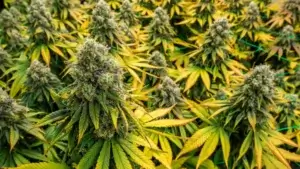Definition:
High Stress Training (HST) is a cannabis cultivation technique involving intentional stress to plants, such as topping, super cropping, or defoliation, to manipulate their growth and improve yield potential.
Purpose and Usage
HST is used to control the shape and size of cannabis plants, promote better light penetration, and increase the number of bud sites. It is a common technique for maximizing yields in small spaces or enhancing overall plant performance.
How It Relates to Cannabis
- Key Techniques in HST:
- Topping: Cutting off the main stem’s top to encourage lateral growth and create multiple main colas.
- Super Cropping: Bending and slightly damaging branches to strengthen them and encourage nutrient distribution.
- Defoliation: Removing fan leaves to improve airflow and light penetration to lower bud sites.
- Steps for Successful HST:
- Timing: Start HST during the vegetative stage to give the plant time to recover.
- Monitoring: Observe plant health closely to ensure recovery after stress.
- Environment: Maintain optimal conditions (light, nutrients, and water) to support recovery and growth.
- Maintenance: Regularly prune and adjust the plant’s shape for best results.
- Benefits:
- Increased bud sites and higher yields.
- Improved airflow and reduced risk of mold or pests.
- Better use of available grow space.
Common Misconceptions
- HST damages plants irreparably: While it involves stressing the plant, when done correctly, HST promotes recovery and stronger growth.
- HST can be done at any time: Applying HST during flowering can cause unnecessary stress and reduce yields.
- All cannabis plants respond well to HST: Some strains, especially autoflowers, may not tolerate HST as well as photoperiod strains.
Alternatives
- Low Stress Training (LST): A gentler method of bending and tying branches without causing damage.
- Screen of Green (ScrOG): Uses a screen to train plants horizontally, maximizing light exposure with minimal stress.
- Sea of Green (SOG): Focuses on growing many small plants with minimal training.
Importance of High Stress Training (HST)
HST is a powerful tool for cannabis growers seeking to maximize yield and control plant structure. By leveraging the plant’s natural ability to recover and adapt, HST enhances bud production and light efficiency in limited grow spaces. Its effectiveness and adaptability make it a cornerstone technique in advanced cannabis cultivation.





